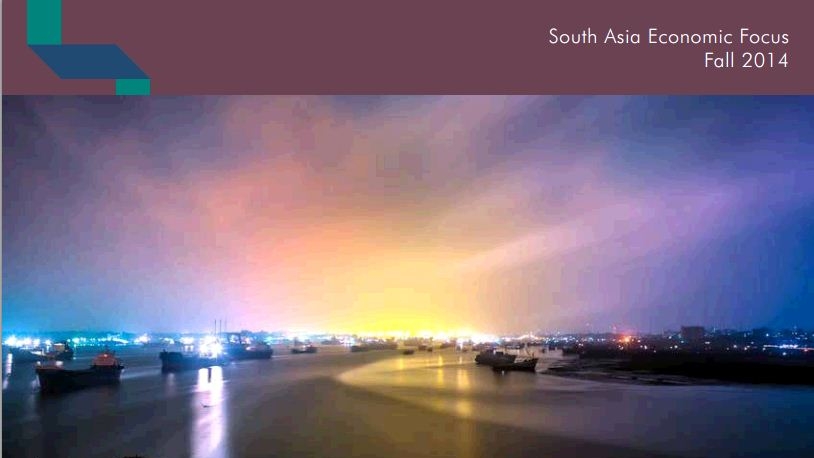WASHINGTON, October 6, 2014— Many South Asian countries show potential for accelerated growth in the short and mid-term:

Economic growth in South Asia is expected to increase to 6.4% in 2016, making it the 2nd fastest growing region in the world after East Asia and the Pacific.
Read Full Report (PDF)
Read Blog: Will South Asia Take Advantage of its Export Opportunity?
WASHINGTON, October 6, 2014— Many South Asian countries show potential for accelerated growth in the short and mid-term:
India:
With over 80 percent of regional Gross Domestic Product (GDP) being concentrated in India, its expected growth acceleration from 4.7 percent in FY2013/14 to 5.6 percent in FY2014/15 and to 6.4 percent in FY2015/16 (all at factor cost) is setting the pace for South Asia. In the short term, continued growth in the U.S. should support demand for Indian merchandise and service exports, remittance inflows will strengthen domestic demand, and declining oil prices will boost private sector competitiveness. Further pursuing economic reforms and improving the investment climate, paired with maintaining prudent macroeconomic policy and a solid external position, would allow India to achieve its long-term growth potential.
Pakistan:
South Asia’s second largest economy is expected to continue on a path of growth recovery, manageable inflation and fiscal consolidation. Real GDP growth is projected to reach 4.3 to 4.6 percent in FY2014/15, driven by services and large scale manufacturing on the supply side, and by strong remittance flows, improving private investment and renewed export dynamism on the demand side. However, this outlook is based upon the important assumption that the political events of August 2014 have not damaged investor confidence or increased overall country risk. These events have already inflicted short-term losses of 2.1 percent of GDP (early September estimates).
Bangladesh:
As Bangladesh has recently found its way back to political stability and is displaying a renewed focus on growth, its GDP growth is expected to recover, rising to 6.2 percent in FY2014/15. This is assuming continued macroeconomic stability and a boost for domestic consumption from remittances and for aggregate demand from public infrastructure investments.
Sri Lanka:
The outlook for Sri Lanka remains positive with an expected 7.8 percent GDP growth in 2014, subdued inflationary pressures, an improving external position and further fiscal consolidation and debt reduction.
Nepal:
In Nepal, GDP growth is expected to be in the 4.5 to 5 percent range in FY2014/15, below last year’s estimate of 5.2 percent. In the short term, performance will mainly depend on investment pick up (and hence political developments), and on trends in remittances.
Afghanistan:
If Afghanistan succeeds in reducing uncertainty and restoring confidence, it may achieve 1.5 percent GDP growth in 2014. However, a substantial downside risk concentrated around security and fiscal stability remains. Much depends on how the new government will address these challenges.